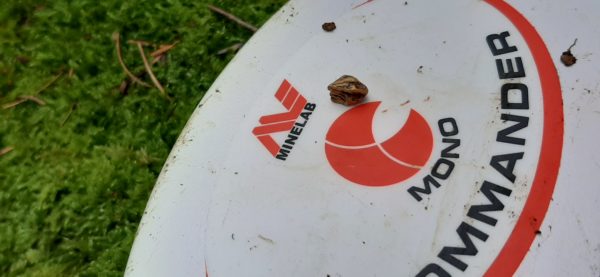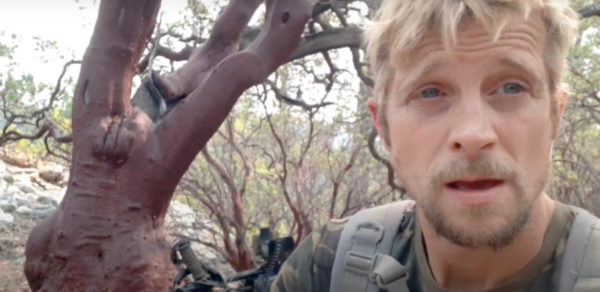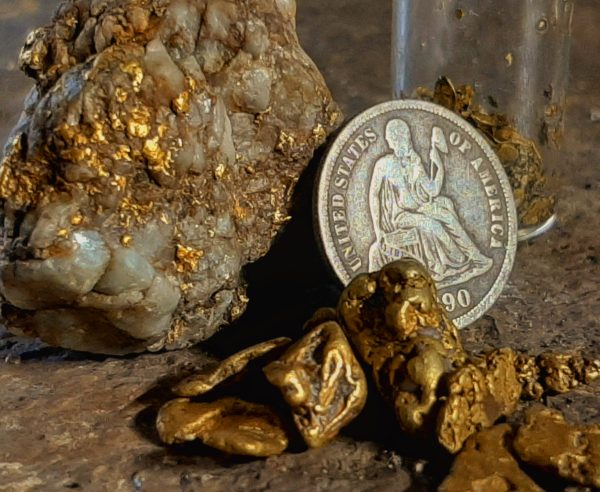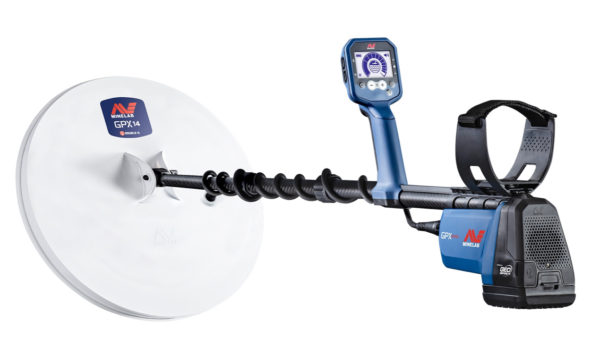OUTDOOR DISCOVERY: Gold from Coast to Coast
Category: article
Oct 18th, 2021 by Keith Worrall
Modified Oct 18th, 2021 at 8:16 PM
Searching for Gold from Coast to Coast
Minelab Detexpert and self-taught gold hunter, Adam Samarco, strikes gold where few others would think of looking

Many people – even those with more than a casual knowledge of gold geology and geography – believe that naturally occurring American gold can only be found in the western states and Alaska. A few people know that the Southeastern U.S. was the site of our nation’s original gold rush, and that gold can still be found in that region today. Fewer still would consider looking for gold in the New England states. After becoming a self-taught expert on gold prospecting, Adam Samarco not only thought of searching for gold in New England, but he has consistently been finding it there for the past ten years.
A resident of Massachusetts, Samarco, was on the job pouring concrete several years ago when he found a large, interesting-looking piece of quartz. Upon analysis, the rock was found to contain gold and silver sulfides. The find marked the beginning of Samarco’s gold-hunting infatuation, a passion that would lead him on a trail across the country in search of the rare and precious element.

Samarco had never taken any geology or chemistry classes, so, after his initial discovery, he began studying everything he could find about gold, its compounds, how it formed and, ultimately, where it could be found. “My research revealed many free mill gold deposits in the northeastern states,” Samarco says.
Free mill gold refers to gold that still exists in its native form – within rock or ore – unlike placer gold, which is gold that has been released from its host rock by natural forces. Non-free mill gold refers to the elemental gold within a chemical compound that requires leaching or smelting to separate. Vermont, New Hampshire, Maine, Rhode Island, Connecticut, and Samarco’s home state of Massachusetts all have free mill and non-free mill gold, often contained within quartz.
Once Samarco taught himself about the kinds of gold available in his area, he began researching where he could expect to find it. “I was working concrete from four in the morning until five or six in the evening, so I didn’t have a lot of time to just wander around looking,” he says. Using what he had learned of the local geology as a starting point, he narrowed down a list of potential local hotspots. Upon researching one such spot just six miles from his home, he discovered a working gold mine had existed there in the 1890’s. Upon securing permission, Samarco discovered the old mine workings. He engineered and built an impact mill to crush ore, and then made a kiln to recover gold from refractory ore (mined ore that contains ultra-fine gold particles).
Since those early discoveries, Samarco has used his knowledge and resourcefulness to locate numerous gold deposits throughout New England – and not just free mill gold; he has also found and recovered placer gold. The Minelab Detexpert went camping in the Swift River area of Maine and says he “found a nugget almost by accident”. More research on the area revealed several key gold-bearing areas within the Pine Tree State.
After four years of prospecting in the east, Adam decided to try his luck out west. He bought a cargo van a few years ago and built his very own expedition camper. He and his family began traveling out west to Arizona, Nevada, and California during the winter months when it was too cold and snowy in Massachusetts to pour concrete.

“I found a good ground source in northern California that first year and proceeded to recover many grams of gold there,” says Samarco, who does his gold detecting with Minelab Gold Monster 1000 and GPX 5000 all-gold detectors. “I’ve found a lot of additional areas since that time, including the hilltops of an ancient riverbed, where I found a two-gram crystalline nugget in the first 30 minutes searching. I also found an 1890’s seated liberty dime next to a nearby 1800’s claim post.”
While memorable, those weren’t Samarco’s best western finds. “I visited a friend’s claim in Eldorado County, turned on my detector, and it almost immediately sounded off on a target which ended up being a 39-gram gold specimen with one ounce of gold inside. My Minelabs rock!”
When prospecting in California, Adam almost exclusively uses his GPX 5000. He says it’s an excellent machine for finding gold nuggets. He leaves his Gold Monster 1000 at home for searching for gold-bearing areas in the east. He plans on moving up to the new Minelab GPX 6000 as soon as possible to further increase his finds.

Watch Adam in his search for this precious metal from coast to coast on his YouTube channel, California Gold Rush.
ABOUT MINELAB:
Minelab is an Australian, multi-award-winning business that has successfully scaled world markets to command global leadership in its key areas of operation. Based in Mawson Lakes, South Australia, with regional offices in Cork, Ireland; Dubai, UAE; Monterrey, Mexico; Itajai, Brazil; and Chicago, U.S.A., the company specializes in advanced electronic technologies. Since its origins in 1985, Minelab has been the world leader in providing metal-detecting technologies for gold prospecting, treasure hunting and landmine clearance. Through devotion to research and development and innovative design, Minelab is today the major world manufacturer of handheld metal detector products. Over the past 30 years, Minelab has introduced more innovative and practical technology than any of its competitors and has taken the metal detecting industry to new levels of excellence. Minelab is a Codan Limited company (ASX: “CDA”). To learn more about Minelab, visit minelab.com.